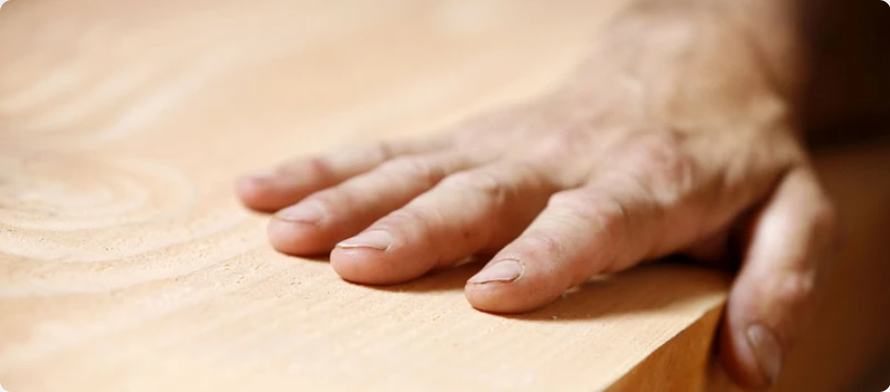Table of Contents
- Wood and Its Surprisingly Good Fire Resistance
- The Porosity of Wood Creates a Comfortable Indoor Climate
- Wood Naturally Provides Good Thermal Insulation
Wood and Its Surprisingly Good Fire Resistance
The flammability of wood is usually the first thing that comes to mind for people who doubt its safety. But that concern can be cleared up pretty easily.
Hardwoods, according to the European classification for the fire performance of construction materials (Euroclasses under EN 13501-1), often fall into the higher-rated categories and are considered hard to ignite.
Even softwoods are usually classified somewhere in the middle, which means they’re not considered “highly flammable.”
It’s also important to remember that these standards only measure the material itself, not how it behaves in real situations. In a fire, even a stone building can burn out completely and end up having to be torn down.
And people living in stone houses aren’t necessarily any safer than those in wooden ones. In fact, a wooden building tends to give much clearer warning signs when a fire breaks out.
Wood loses its stability slowly, not all at once. The outer layer chars and forms a protective shell that actually shields the inner structure from heat for a surprisingly long time, preventing it from collapsing too quickly.
It’s also worth noting that these standards don’t have much statistical or historical relevance. Spontaneous fires have rarely been the main cause of building decay, especially in the moderate climates of Central Europe.
So, what’s the takeaway? Yes, wood can burn, that’s simply physics. But:
- Metals can glow and melt - wood cannot.
- Plastics can melt or evaporate - wood cannot.
- Marble and stone can crack - that one, wood can do too.
The Porosity of Wood Creates a Comfortable Indoor Climate
As a natural and porous material, wood has hygroscopic properties, which means it can absorb moisture and hold onto it for quite some time.
This also causes a certain amount of swelling and expansion in volume. When wood stays in contact with moisture or water for too long, that swelling can become a drawback.
However, in the case of hardwoods, this effect is so minimal that it does not have any real impact on the structural joints of a building.
In fact, the hygroscopic nature of wood helps create a healthy and pleasant indoor climate, something that many modern building materials try to imitate through artificial means.
In short, wood may not be ideal for underground construction, but in above-ground projects, it can really show its strengths.

Wood Naturally Provides Good Thermal Insulation
At first glance, solid natural wood might not seem to have a big advantage over insulation materials like mineral wool, expanded polystyrene or modern building blocks filled with air or gas.
But when you compare it directly with denser materials such as concrete or natural stone, wood clearly performs better when it comes to thermal conductivity.
Of course, a wooden building would still need some extra insulation to meet the strict energy standards of a nearly passive house.
That said, the amount of insulation required for wood is much lower than what you would need with other heavy construction materials to achieve the same level of energy efficiency.
Final Conclusion: Wood Has Far More Advantages Than Disadvantages
Wood continues to be an appealing material, even for the most demanding professionals.
With sustainability and the need to reduce CO₂ emissions becoming more important than ever, wood is once again proving itself as a great option, even as a standard material for construction projects in urban areas.
Sometimes, it simply takes a fresh perspective to rediscover its full potential.

